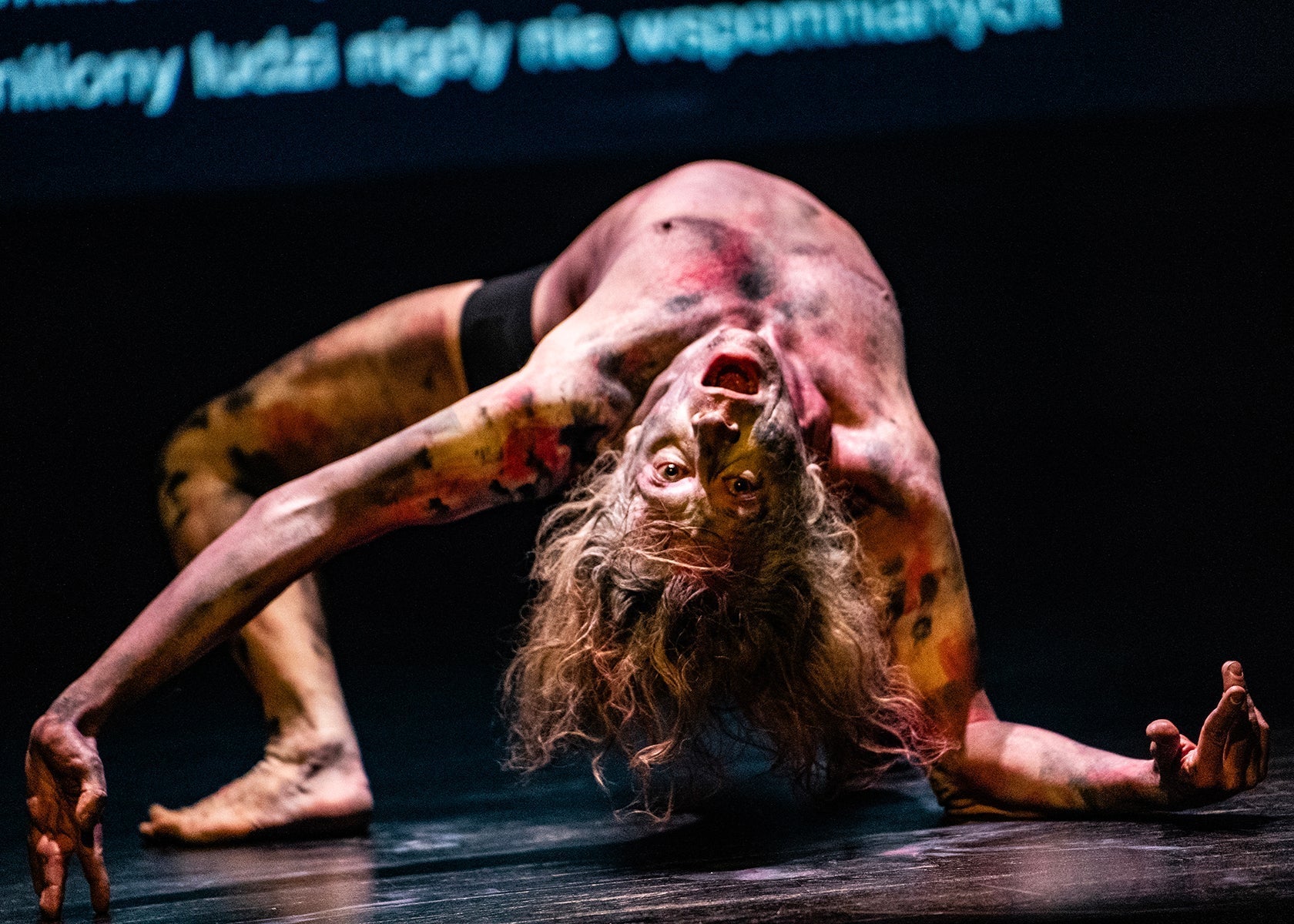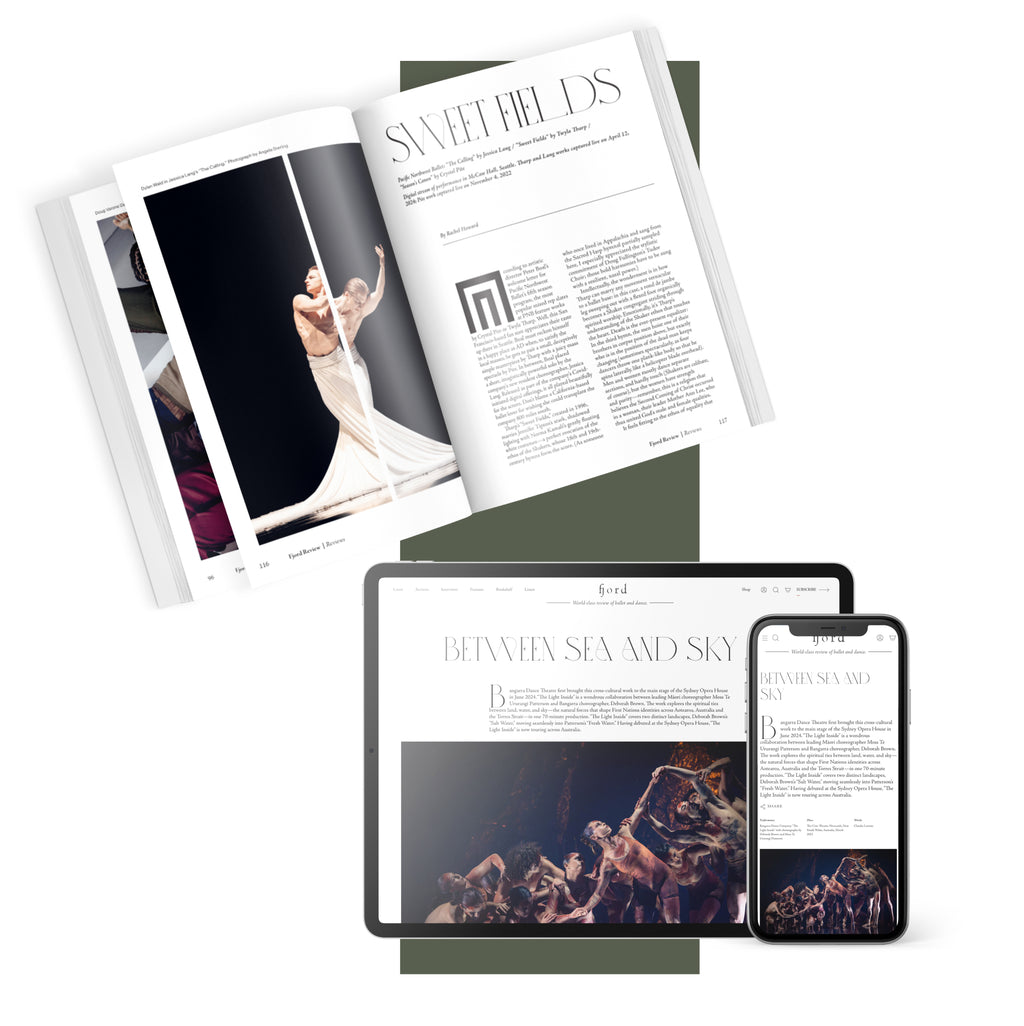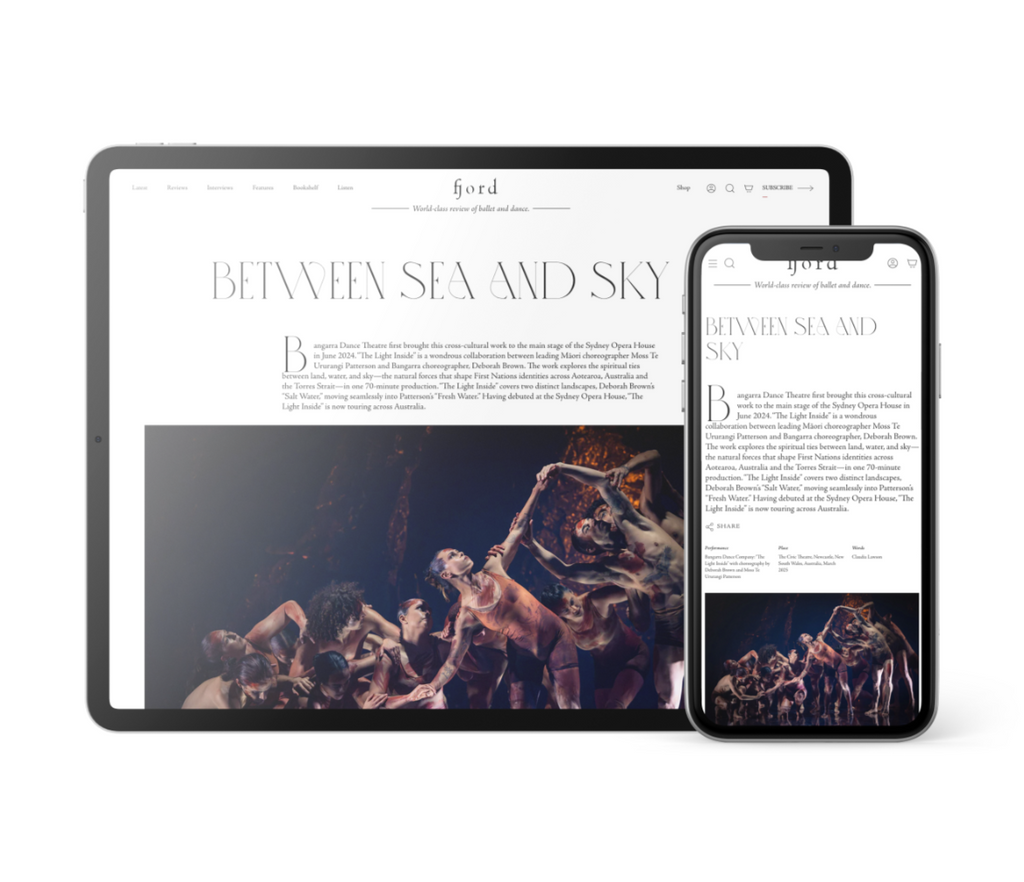Mishima’s Muse
Japan Society’s Yukio Mishima centennial series culminated with “Mishima’s Muse – Noh Theater,” which was actually three programs of traditional noh works that Japanese author Yukio Mishima adapted into modern plays.
Continue Reading
World-class review of ballet and dance.
Eschewing a conventional film narrative, Labyrinth of the Unseen World created in collaboration by French filmmaker Amelie Ravalec and Scots/Irish dance artist Paul Michael Henry, instead fuses visual poetry with dance performance, creating a hallucinatory, disturbing, yet beautiful dreamscape. There is nothing as prosaic as dystopia sci-fi here; rather, the film seeks to interrogate human consciousness itself. Because of the fever dream quality, the film is presented in fragmented scenes, juxtaposing fear with hope, beauty with decay.
Performance
Place
Words



“Uncommonly intelligent, substantial coverage.”
Your weekly source for world-class dance reviews, interviews, articles, and more.
Already a paid subscriber? Login

Japan Society’s Yukio Mishima centennial series culminated with “Mishima’s Muse – Noh Theater,” which was actually three programs of traditional noh works that Japanese author Yukio Mishima adapted into modern plays.
Continue ReadingThroughout the year, our critics attend hundreds of dance performances, whether onsite, outdoors, or on the proscenium stage, around the world.
Continue ReadingOn December 11th, the Alvin Ailey American Dance Theater presented two premieres and two dances that had premiered just a week prior.
Continue ReadingThe “Contrastes” evening is one of the Paris Opéra Ballet’s increasingly frequent ventures into non-classical choreographic territory.
Continue Reading
comments